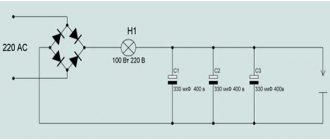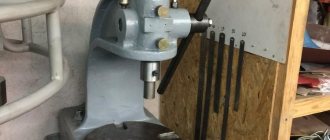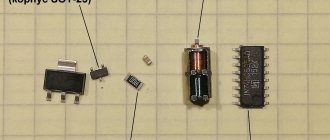Scope of use of such systems
Today it is used as a component of the boom mechanism of a tower or other crane, devices and devices for performing rigging work. They can also be used separately to carefully move and safely lift various loads on small ships and other objects. Among other areas of application, we note:
- tensioning high-voltage power lines, communication lines, load-bearing cables of various designs;
- maintaining constant pressure on the supports when lowering and lifting massive objects;
- moving massive objects, including pulling out cars that are stuck or run off the road;
- active recreation (mountain climbing, extreme tourism).
Design features of modern pulley hoists
The main area of application of such systems remains jib mechanisms of tower, bridge, and truck cranes. With the help of pulleys you can significantly increase force or, conversely, speed. The first is used in cranes, and the second in lifts. Structurally, they include the following elements:
- movable and fixed blocks;
- bypass drums;
- bypass blocks.
The traditional layout of pulley blocks remains vertical, and the location of the drum is determined by the presence of bypass blocks. If the latter are absent, then the drum is at the top and vice versa. At the same time, the number of blocks (for the power type) determines the degree of growth of the total force, and the number of similar elements with a fixed axis is 1 less than with a movable one.
Lift with at home
Sometimes in everyday life there is a need to lift a heavy load, but not all people have the opportunity to drive a construction crane to the threshold, which requires them to get out of it. And this is where the block system can come to the rescue. Pulley hoists, the purpose and design of which may seem quite complicated to design, but with proper preparation, creating such a design at home will not be a problem. Everything is done in four stages:
- Calculations.
They are produced taking into account your goals and objectives, namely, the parameters of the working room, the presence of restrictions in it, the weight of the cargo and the distance over which it needs to be transported. It is necessary to record all these data to draw up a drawing and select a design.
- Creating a drawing.
If you have no experience in this matter, then it is better to contact a person with experience and engineering education who can reduce the time for creating a model on paper. If you can’t get help from anywhere, then it’s better to go online and look at working drawings of basic structures. Each type will be effective under certain conditions, which you will measure earlier.
- Selection of materials.
The selection should begin already in the first stages, namely, starting from the things you already have and those that can be purchased. It depends on your drawing and calculations what parts will be needed and what material is best to use. Buy according to your budget and with a reserve for future use. You shouldn’t save much, otherwise the design may fail at the most crucial moment.
- Construction.
This step is the simplest of all, because here you just need to follow the plan and do it conscientiously.
With a certain skill and preparedness, you can get a very high-quality working model that will not be inferior to construction analogues. But if the tasks are not too ambitious, then this will not require significant expenses. For reliability, you can use ready-made parts from construction pulleys.
Specifics of multiplicity increase in pulley hoists of various types
Increasing the multiplicity in power systems allows you to reduce the load on each individual rope, which allows you to achieve several effects at once:
- possibility of using ropes of smaller diameter;
- possibility of reducing the diameter of blocks and drum;
- possibility of reducing the weight and transmission ratio of the drive gearbox.
At the same time, in this case, a larger rope capacity of the drum will be needed, since a gain in strength automatically leads to a “loss” in distance.
In high-speed pulleys, the labor force, which is developed by a pneumatic or hydraulic cylinder, is applied directly to the movable cage, and the load is simultaneously suspended from the free edge of the lifting chain, rope or rope. Here, the greater the gain in speed, the higher the lifting of the load.
History of creation and definition
No one knows for sure when exactly mechanisms for moving heavy objects in space appeared and began to be used. First of all, we note: a chain hoist (what it is, technical literature can also tell you) is a system of blocks and ropes that can significantly simplify and speed up planned work with heavy objects.
The study of such architectural monuments as the Cheops pyramids in Egypt, the Great Wall of China and other ancient structures clearly confirms that pulleys, the purpose and design of which will be discussed below, were invented several thousand years ago. It is quite obvious that they were initially characterized by primitiveness.
Features of power pulleys
The key characteristic of such systems remains the maximum load that can be developed. In general, it depends on the following factors:
- lifting capacity of the crane where the pulleys are installed;
- multiplicity of the device (total number of rope branches holding the load);
- The efficiency of the block, which is determined by the losses to overcome the friction force, as well as those that depend on the rigidity of the chain or rope.
Several pulleys can be simultaneously installed on the mechanism for lifting and moving cargo, which allows you to evenly distribute the load and reduce the thickness of the rope or rope. At the same time, single pulleys are the simplest technically (they have one end fixed and the other on the drum). At the same time, the latter have a very limited deflection angle due to the risk of the lifting rope coming off the block. At the same time, the presence of an additional unit complicates and increases the cost of the entire system, but provides several advantages:
- the ability to increase the speed of block rotation;
- reduced rope wear;
- more symmetrical load arrangement.
The following pulley systems are most widely used in practice:
- double triple with the presence in the layout of two bypass and three working blocks;
- double triple, having a leveling beam, which will allow the use of lifting equipment in difficult conditions.
Powerful block without DIY turning work
Hello, Today, with my own hands - a powerful block without the use of turning.
It was necessary to change the design of the suspension in greenhouses, where I used a block system to tension the 3 mm cable while bending it at 90°, so several blocks were needed.
Surely there are others, but for sale I found only one like the one in the photo, which didn’t quite inspire confidence in me, looks beautiful, but is completely unsatisfactory in terms of functionality, namely reliability, plus the price (8 pieces were needed).
I had to make my own version, and without the use of turning work, which I present to your attention.
The block described in this publication is designed for a cable Ø 3 - 4 mm and for the radius of its bend that I need, but using the same principle it is possible to make a block for a different cable diameter and maximum load, which will depend only on the choice of the rigging eyelet.
Of course, it is not designed for high rotation speeds, but for work in conditions where this is not required, it is quite suitable, the main thing is its power, and therefore reliability.
And if you make a pulley on a lathe, then the block will meet absolutely all the requirements necessary for it.
Components for making the block:
Earring (bracket) rigging 5 mm - 1 pc. The Omega type configuration is better, but I only found a straight one of this size.
Reinforced washer M8 - 2 pcs.
M8 washer - 2 pcs. Attention! They should be the same, given that the washers come in different diameters and thicknesses. I selected washers with a total thickness of 4 mm, which is what I needed
I selected washers with a total thickness of 4 mm, which is what I needed.
Screw M8 × 25 — 1 pc. Attention! For convenience, when drilling an axial hole, it is advisable to choose the screw shown in the photo. Through nut M8 - 1 pc.
Through nut M8 - 1 pc.
Manufacturing:
Making several blocks at once takes very little time if you perform each individual operation for all the workpieces at once.
Assemble the prepared components together.
To do this, hold the screw head in a vice and tighten the nut tightly.
Clamp the workpiece with the threaded part in the drill chuck using a Ø 4.8 mm drill. make an axial hole.
Using a grinder and a cutting wheel 1 mm thick, cut off the screw head and nut to a thickness of 1.5 ÷ 2 mm from the plane of the outer washers.
Attention! This option for manufacturing a block provides for the possibility of not using a welding machine, but it would be better if, before or after cutting, electric welding (two or three points) is used to attach the screw head and nut to the outermost wide washers. Using a suitable tool, with a diameter slightly larger than the thickness of the manufactured pulley, slightly spread the “horns” of the earring (I used a Ø 12 mm drill as a tool)
Using a suitable tool, with a diameter slightly larger than the thickness of the manufactured pulley, slightly spread the “horns” of the earring (I used a Ø 12 mm drill as a tool).
Using light blows of a hammer, with the device inserted, bring the “horns” of the earring together to the desired size, thus fitting the rigging bracket to the manufactured pulley.
Place the pulley in place.
Attention! Everything is manufactured without turning, so adjustments are indispensable for free rotation of the pulley. Powerful block for cable 3 ÷ 4 mm, made without turning, ready
A powerful block for a cable 3 ÷ 4 mm, made without turning, is ready.
That's all. Good luck!
Become the author of the site, publish your own articles, descriptions of homemade products and pay for the text. Read more here.
Features of choosing a chain hoist
Ideally, such a system should be designed individually for each lifting mechanism. The following factors are taken into account:
- total load capacity of the mechanism;
- the number of bypass blocks that influence the final losses due to constant friction (depending on the type of support bearings and lubrication method);
- diameters of individual pulley elements;
- angles of permissible possible deviation from the plane of bypass drums;
- material for the manufacture of lifting rope;
- the nature and type of supports, lubrication methods to reduce axle friction;
- speed of movement of moving blocks.
In practice, standard solutions are usually used, which saves time on production, design of such systems, and their certification. Additionally, they are much cheaper for the end buyer.
Refilling chain hoists
In practice, it may be necessary to change the distance between the main cargo blocks and the location of the latter. This procedure is called reeving and it allows you to change the speed or height of lifting the load. In cargo cranes, it can be used to correct the broken straightness of the lift, which increases the overall safety of work and predictability of behavior.
There are four types of reserve:
- Single-use, which is used on boom lifting mechanisms equipped with a boom. In this case, the hook is suspended on one thread of the rope and passed through all the blocks, followed by winding onto a rigidly fixed drum.
- Double, which is used on various cranes with beam and luffing jib. In the 1st case, the end of the rope is attached to the root, and the 2nd is driven through bypass drums, hook and boom blocks, and the top of the tower with supply to the winch. In the 2nd case, fixedly rigidly fixed blocks are placed directly on the boom head, and the rope is attached directly to the cargo winch.
- Quadruple, which is usually used on cranes and mechanisms with high lifting capacity. It is based on single or double refilling, but it is sold separately for each of the existing blocks.
- A variable based on the desire to change the working load capacity of the mechanism. To do this, movable clips are mounted in movable blocks, which are held by the rope or chain itself. The change in the multiplicity of the reeving carried out as a result occurs due to the lowering of the suspension onto a special support, which occurs when the rope is reeled in.
You can purchase pulley hoists, as well as blocks for them, by leaving a request by calling toll-free 8 (800) 550-93-95 or email
How rope affects work efficiency
You can avoid pinching and twisting of the rope if you use additional devices, for example, mounting plates, which allow you to space the rollers relative to each other. We categorically do not recommend using stretchable ropes in pulley hoists, since in comparison with conventional static products they seriously lose in efficiency. When assembling a block for lifting loads, specialists use both load and separate ropes, which are attached to the object independently of the lifting device.
There is some advantage to using separate ropes. The idea is that a separate rope provides the ability to pre-assemble or pre-assemble the entire structure. In addition, the passage of knots can be significantly facilitated, since the entire length of the rope is used. The only drawback is the inability to secure the load automatically. Cargo ropes can boast of just this feature, so if there is a need to automatically secure a load, use a cargo rope.
The reverse motion is of great importance. This effect is inevitable, since at the moment of removal, as well as when intercepting the rope or stopping to rest, the load certainly moves in the opposite direction. How much the load goes back depends on the quality of the blocks used, as well as the entire device as a whole. This phenomenon can be prevented by purchasing special rollers that allow the rope to pass only in one direction.
Let's talk a little about how to properly attach a cargo rope to a lifting mechanism. Not always, even the most prudent master has a rope of the required length, which is required to attach the dynamic part of the block. Therefore, several methods of attaching the mechanism have been developed:
Using grasping knots. These knots are tied in five turns from cords, the cross-section of which does not exceed 8 mm. The use of such nodes is the most effective and, accordingly, widespread. According to experts, the units are very durable and reliable. Only a load over 13 kN can cause such a unit to slip
The important thing is that even when sliding, the knot does not deform the rope in any way, leaving it safe and sound. Application of general purpose clamps. These devices can be used even in difficult climatic conditions, for example, on wet or icy ropes
A load of 7 kN can cause the clamp to slip, which leads to damage to the rope, although not very severe. Personal clips. They are used only for small jobs, since a load over 4 kN leads to the clamp slipping and subsequent rope breakage.











